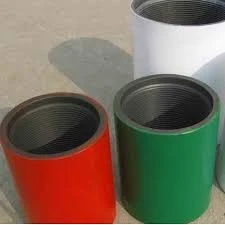- Afrikaans
- Albanian
- Amharic
- Arabic
- Armenian
- Azerbaijani
- Basque
- Belarusian
- Bengali
- Bosnian
- Bulgarian
- Catalan
- Cebuano
- Corsican
- Croatian
- Czech
- Danish
- Dutch
- English
- Esperanto
- Estonian
- Finnish
- French
- Frisian
- Galician
- Georgian
- German
- Greek
- Gujarati
- Haitian Creole
- hausa
- hawaiian
- Hebrew
- Hindi
- Miao
- Hungarian
- Icelandic
- igbo
- Indonesian
- irish
- Italian
- Japanese
- Javanese
- Kannada
- kazakh
- Khmer
- Rwandese
- Korean
- Kurdish
- Kyrgyz
- Lao
- Latin
- Latvian
- Lithuanian
- Luxembourgish
- Macedonian
- Malgashi
- Malay
- Malayalam
- Maltese
- Maori
- Marathi
- Mongolian
- Myanmar
- Nepali
- Norwegian
- Norwegian
- Occitan
- Pashto
- Persian
- Polish
- Portuguese
- Punjabi
- Romanian
- Russian
- Samoan
- Scottish Gaelic
- Serbian
- Sesotho
- Shona
- Sindhi
- Sinhala
- Slovak
- Slovenian
- Somali
- Spanish
- Sundanese
- Swahili
- Swedish
- Tagalog
- Tajik
- Tamil
- Tatar
- Telugu
- Thai
- Turkish
- Turkmen
- Ukrainian
- Urdu
- Uighur
- Uzbek
- Vietnamese
- Welsh
- Bantu
- Yiddish
- Yoruba
- Zulu
Strategies for Effective Coupling in Tubing Systems and Applications
Understanding Coupling for Tubing A Comprehensive Guide
In the realm of plumbing and construction, the term coupling identifies a critical connection piece used to join two sections of tubing or piping. Couplings are essential components in various applications, ranging from residential plumbing systems to large-scale industrial projects. This article explores the significance of couplings for tubing, various types available, materials used, and best practices for installation and maintenance.
The Importance of Couplings in Tubing Systems
Couplings serve an important function they ensure the seamless flow of liquids or gases by creating a secure and leak-proof connection between different lengths of tubing. Without couplings, pipelines would be inefficient and prone to leaks, which can lead to wastage of resources, increased costs, and potential hazards. In sectors such as oil and gas, water supply, and chemical processing, the reliability of tube connections is paramount, making the choice of couplings a vital consideration.
Types of Couplings
1. Compression Couplings These are perhaps the most common type used in plumbing. Compression couplings create a tight seal through the use of a threaded nut that compresses a soft ring onto the tubing. They are favored for their ease of use and effectiveness, primarily in applications where quick disassembly is necessary.
2. Soldering or Weld Couplings This type involves the process of melting a filler metal to join the tubing together. Soldered or welded couplings offer strong, permanent connections ideal for high-pressure applications, such as gas pipelines and refrigeration systems.
3. Slip Couplings As the name suggests, these couplings slide over the ends of two pieces of tubing. They are typically used for repair jobs, allowing for quick fixes by bridging gaps without the need for pipe removal.
4. PVC Couplings Specific to plastic applications, PVC couplings are used extensively in irrigation and drainage systems. They provide a lightweight yet durable option, often chosen for their resistance to corrosion.
5. Flexible Couplings Designed to accommodate misalignments between pipes, flexible couplings can absorb vibration and movement from settling or thermal expansion. They are particularly useful in complicated installations where the alignment of tubing may not be perfect.
Material Choices for Couplings
coupling for tubing

The material of a coupling is also of critical importance, as it affects the coupling's durability, resistance to corrosion, and overall performance
. Common materials include- Brass Known for its durability and resistance to corrosion, brass couplings are often used in plumbing applications. - Stainless Steel Ideal for high-pressure applications and environments with extreme temperatures, stainless steel couplings provide strength and longevity. - PVC and CPVC These plastic materials are lightweight, easy to install, and resistant to chemicals, making them popular in residential plumbing systems. Best Practices for Installation and Maintenance
When installing couplings, it is crucial to follow best practices to avoid potential issues. Here are a few tips
1. Ensure Compatibility Always ensure that the coupling is compatible with the type of tubing being used. Mismatched materials can lead to leaks or failures.
2. Clean the Surfaces Before installing a coupling, clean the ends of the tubing to remove any debris, dirt, or corrosion. This will help create a better seal.
3. Use Proper Tools Employ appropriate tools for tightening couplings, avoiding overtightening which can cause damage to the tubing or the coupling itself.
4. Regular Maintenance Periodic checks on couplings for signs of wear, leakage, or corrosion can prevent future breakdowns and costly repairs.
5. Follow Manufacturer Guidelines Each type of coupling may have specific installation instructions provided by the manufacturer. Adhering to these guidelines ensures optimal performance.
Conclusion
In summation, couplings are indispensable components within tubing systems, playing a crucial role in ensuring the reliability and efficiency of piping applications. By understanding the various types of couplings, the materials used, and the best practices for installation and maintenance, individuals and professionals can ensure that their plumbing and piping systems operate smoothly and effectively. Whether in residential or industrial settings, a sound knowledge of couplings for tubing is vital for anyone involved in this field.
-
Tubing Pup Joints: Essential Components for Oil and Gas OperationsNewsJul.10,2025
-
Pup Joints: Essential Components for Reliable Drilling OperationsNewsJul.10,2025
-
Pipe Couplings: Connecting Your World EfficientlyNewsJul.10,2025
-
Mastering Oilfield Operations with Quality Tubing and CasingNewsJul.10,2025
-
High-Quality Casing Couplings for Every NeedNewsJul.10,2025
-
Boost Your Drilling Efficiency with Premium Crossover Tools & Seating NipplesNewsJul.10,2025







